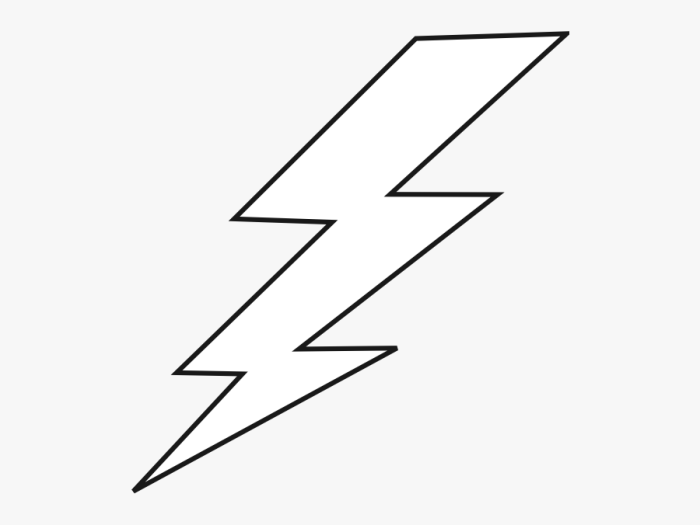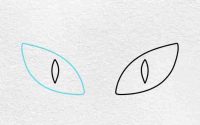Window on Lightning Drawing Easy
Easy Lightning Drawing Techniques
Window on lighning drawing easy – Okay, so you wanna draw lightning? Think electrifying energy, not a wobbly line! It’s easier than you think, even if you’re, like, totally new to this art thing. We’re gonna break it down Pontianak-style – simple, effective, and totally rad.
Step-by-Step Lightning Bolt Creation, Window on lighning drawing easy
Let’s make a basic lightning bolt. First, draw a jagged, zig-zag line. Think of it as a super-excited, slightly drunk worm. This is your main lightning path. Now, add smaller, shorter zig-zags branching off from the main line.
These are the smaller, energetic bits that make it look realistic. Don’t be afraid to let your lines get a little wild! Finally, thicken some parts of the lines to give it more intensity. Think of it like highlighting the most powerful parts of the strike. Boom! Lightning bolt achieved.
Three Methods for Depicting Lightning’s Movement and Energy
Here are three different ways to show how lightning moves: Method one: Use thick, bold lines for the main strike and thinner lines for the branches, suggesting a powerful main current with branching energy. Method two: Create a series of short, overlapping lines to illustrate the rapid, erratic movement of lightning. Think fast, chaotic scribbles. Method three: Use a combination of both – a thick, jagged main line with thin, overlapping lines branching out, showcasing both power and movement.
The simplified depiction of lightning, often achieved through basic geometric shapes, provides a foundational understanding of visual representation. This principle extends to other illustrative techniques, such as the straightforward approach demonstrated in easy drawing of elytra on animals , where simple forms convey complex biological structures. Applying this same methodology, even intricate lightning patterns can be rendered accessibly, emphasizing core shapes over minute details for effective visual communication.
Creating a Lightning Bolt Using Basic Shapes
You can actually make a lightning bolt using only simple shapes! Start with a long, thin, slightly curved rectangle. This is your base. Now, add smaller, angled rectangles branching off at different angles from the main rectangle. Overlap them slightly for a more realistic look. Finally, erase the parts where the shapes overlap to create the jagged edges.
See? Super simple! You’ve just created a lightning bolt using only rectangles. Easy peasy, lemon squeezy!
Incorporating the Window Element

Okay, so you’ve got your lightning crackin’, but now we gotta slap it into a window, Pontianak style! Think of it like adding some serious drama to your already awesome drawing. We’re not just throwing lightning in any old place; we’re strategically placing it to make the whole scene pop.Adding a window isn’t just about drawing a square; it’s about creating depth and perspective.
We’re going for that realistic touch, the kind that makes people go, “Whoa, that’s amazing!” It’s all about those vanishing points and how they make the window look like it’s actually – there*.
Realistic Window Frame Perspective
To draw a realistic window frame, start by sketching a simple rectangle. This will be the base of your window. Now, remember those vanishing points we talked about? Pick two points on your horizon line – these are where your window’s edges will seemingly disappear into the distance. Lightly draw lines from the corners of your rectangle to these vanishing points.
These lines guide the perspective of your window frame. Then, draw the window’s frame lines, following these perspective lines. Remember, the further away the parts of the frame are, the closer the lines get to your vanishing points. To add depth, you can add slightly thicker lines to the closer parts of the frame, making them appear more prominent.
Finally, add the window panes; these should also follow the perspective lines, creating smaller rectangles within the main frame.
Integrating Lightning Within the Window Frame
Now for the fun part – integrating the lightning! Think of your window as a frame for the lightning’s performance. You’ll want to consider the perspective of the window when drawing the lightning. If the window is close to the viewer, the lightning should be drawn with more detail and appear closer to the front of the frame.
If the window is far away, the lightning can be simplified and drawn smaller, maintaining consistency with the perspective. Consider how the lightning interacts with the window frame. Does it strike the frame itself, or does it appear behind it? This detail can add a lot of realism and visual interest. The lightning shouldn’t just be a random squiggle; let it follow the perspective of the window.
If the window is angled, the lightning should also appear angled.
Visual Guide for Lightning Placement
Imagine a window looking straight ahead, the viewer is slightly below the window’s level. The frame is rectangular, with the bottom edge closest to the viewer and the top edge furthest. The lightning bolt is positioned behind the window, with its base slightly below the center of the window and its point extending upwards towards the upper right corner. The lightning should appear to be slightly angled to align with the perspective of the window frame.
This creates the illusion of depth and places the lightning bolt within the scene realistically. Now, imagine the same window, but this time, the lightning strikes directly through one of the panes of glass. The lightning should be broken up slightly by the glass, creating small, almost imperceptible breaks in the path of the bolt. This is a more advanced technique that adds an extra layer of realism.
Finally, visualize the window at a slightly oblique angle. The lightning should now appear angled to match the perspective of the window, maintaining consistency and enhancing the three-dimensional effect.
Illustrative Examples: Window On Lighning Drawing Easy

Okay, so we’ve covered the
- how-to* of drawing lightning through windows. Now, let’s get into some
- serious* visual storytelling, Pontianak style. Think dramatic lighting, rain-slicked streets, and maybe a little bit of
- seram* (spooky) vibes. We’re going to dive into some specific examples to really bring those lightning bolts to life on your paper.
Rain-Streaked Window Lightning
Imagine this: You’re looking out a window during a downpour. The glass is smeared with rain, distorting the view outside. A jagged bolt of lightning illuminates the scene, briefly transforming the blurry landscape into a stark, high-contrast image. The light is intense, almost white, but with a bluish-tinged glow around the edges. The shadows are deep and inky black, created by the rain obscuring the light and by the objects outside the window.
The colours are muted and desaturated, except for the electric blue-white of the lightning itself, which pops against the dark, wet background. The rain streaks on the window act as natural lines, adding texture and depth to the drawing. You can even incorporate the reflections of the lightning in the wet glass for an extra layer of visual interest.
Think about the way the light reflects and refracts through the water droplets, creating shimmering highlights and subtle rainbows.
Nighttime Lightning Strike on a Building
Picture this: It’s pitch black outside, the kind of night where you can barely see your hand in front of your face. Then, BAM! A lightning bolt strikes a tall building in the distance. The flash is blindingly bright, a searing white that briefly illuminates the entire scene. The building, previously a dark silhouette against the night sky, is suddenly bathed in harsh, unnatural light, revealing its architectural details in sharp relief.
The shadows are intense, swallowing the surrounding areas in darkness. The light from the lightning reflects off the wet streets below, creating a fleeting pool of light. You can depict the building’s windows as dark rectangles, except for a few that might catch the lightning’s glare, creating tiny points of light. The overall color palette is dark, with the bright white of the lightning bolt being the focal point, creating a dramatic contrast.
You could even add a hint of orange or yellow to suggest the reflection of the lightning on nearby buildings or the ground.
Lightning Storm Through Stained Glass
Now, let’s get a littlefancier*. Imagine a majestic lightning storm raging outside, but you’re viewing it through a beautiful stained-glass window. The colours of the glass – perhaps rich blues, reds, and yellows – interact with the light from the lightning bolts. The lightning flashes aren’t just white; they’re refracted and scattered, creating vibrant, almost iridescent colours. The stained-glass pieces act as prisms, breaking down the lightning’s light into a spectrum of hues.
The shadows cast by the glass are coloured and patterned, creating an intricate interplay of light and shadow. The overall effect is surreal and almost dreamlike, a blend of the raw power of nature and the artistry of the stained glass. Think about how the lightning’s light bleeds through the glass, creating glowing edges and halos around the individual panes.
The colours are vibrant and saturated, a stark contrast to the dark, stormy night outside.
Questions Often Asked
What kind of paper is best for lightning drawings?
Smooth, bright white paper works well for capturing the sharp lines of lightning and the detail of window reflections. However, textured paper can also add interesting effects.
Can I use colored pencils instead of graphite?
Absolutely! Colored pencils allow for a wider range of expressive choices, capturing the vibrant colors of a storm.
How can I make my lightning look more realistic?
Focus on the jagged, unpredictable nature of lightning bolts. Vary the thickness of the lines and incorporate subtle branching details.
What if I can’t draw a perfect window frame?
Don’t worry about perfection! A slightly imperfect frame can add to the charm and realism of the drawing. Focus on conveying the essence of the window, rather than achieving photorealism.



